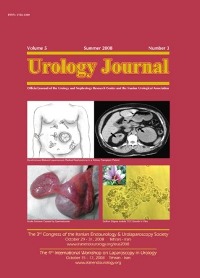Effect of Thymoquinone on Ethylene Glycol-Induced Kidney Calculi in Rats
Urology Journal,
Vol. 5 No. 3 (2008),
25 Azar 2008
,
Page 149-155
https://doi.org/10.22037/uj.v5i3.7
Abstract
Introduction: The aim of this study was to investigate the effects of thymoquinone, a major component of Nigella Sativa seeds on ethylene glycol-induced kidney calculi in rats. Â
Materials and Methods: Sixty male Wistar rats were randomly divided into 6 groups (intact control, ethylene glycol control, and 4 experimental groups) and treated for 28 days according to the protocol of the study. The rats in experimental groups received ethylene glycol and intraperitoneal injection of thymoquinone either from the first day of the study or the 15th day, with either doses of 5 mg/kg or 10 mg/kg. Blood and 24-hour urine samples were collected at baseline and on day 28. Urine oxalate and citrate and serum electrolytes were also measured. On day 29, all rats were decapitated and their kidney specimens were studied.
Results: On day 28, urine oxalate concentration significantly decreased in the experimental groups compared to the ethylene glycol group (P < .001). Also, serum calcium levels were significantly higher in the experimental groups (P = .001). Calcium oxalate deposits were smaller in the experimental groups than the ethylene glycol group. The mean number of deposits was lower in these groups, too (P < .001). Treatment with the lower dose of thymoquinone was associated with fewer deposits.
Conclusion: Thymoquinone significantly decreased the number and size of calcium oxalate deposits in the renal tubules. The dose and duration of treatment, however, does not have a linear relation with the outcomes. Further studies on thymoquinone as a preventive and therapeutic drug for kidney calculi are suggested.How to Cite
- Abstract Viewed: 294 times
- PDF Downloaded: 242 times
